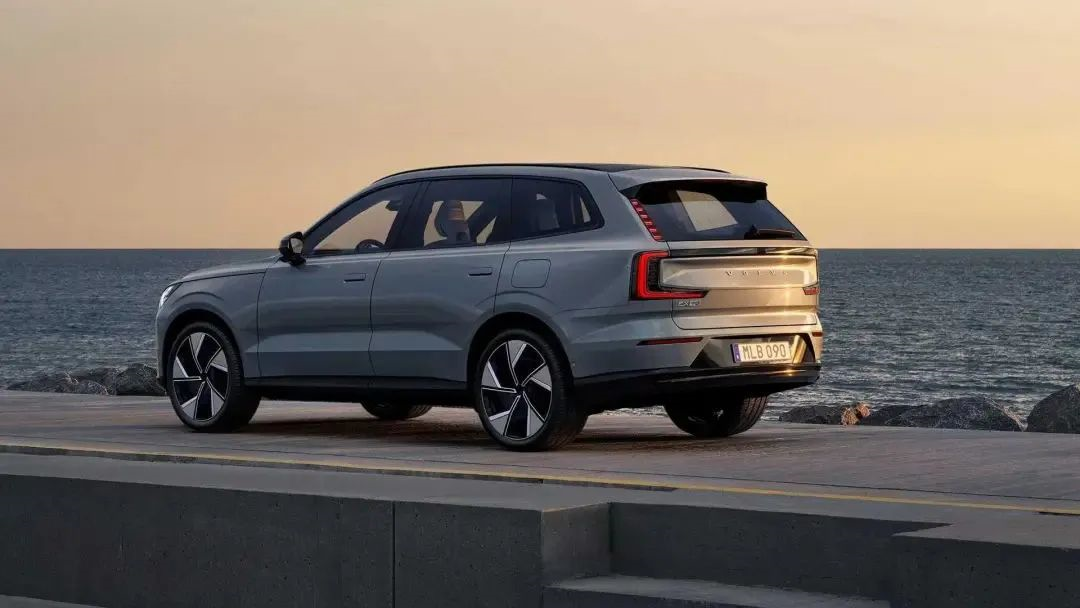Author: Wang Jie
Volvo EX90 has finally been released. From the launch event, it can be seen that the degree of restoration of the appearance compared to the concept car Concept Recharge is quite high, with only minor adjustments.
For example, the B-pillar which disappeared in the concept car was retained in the EX90. The Concept Recharge looks more fierce with tail lines upward and backward, while the Volvo EX90 looks more rounded and approachable.
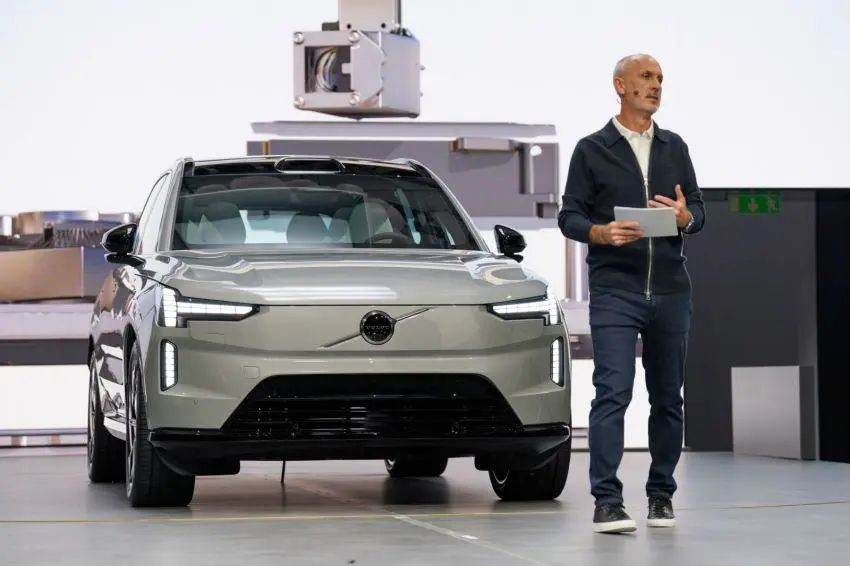
As the first flagship SUV built on the new pure electric platform of the Volvo brand, Volvo EX90 has an important strategic position, representing the comprehensive opening of the pure electric era of Volvo.
Function upgrade is more imaginative
This time, the Volvo EX90 also adopted the central electronic and electrical architecture. Through the central computing platform and the vehicle-wide SOA software architecture, the new model can be more flexible and quickly iterated in terms of functionality. The vehicle-wide OTA online upgrade can be achieved, which is a big step for Volvo.
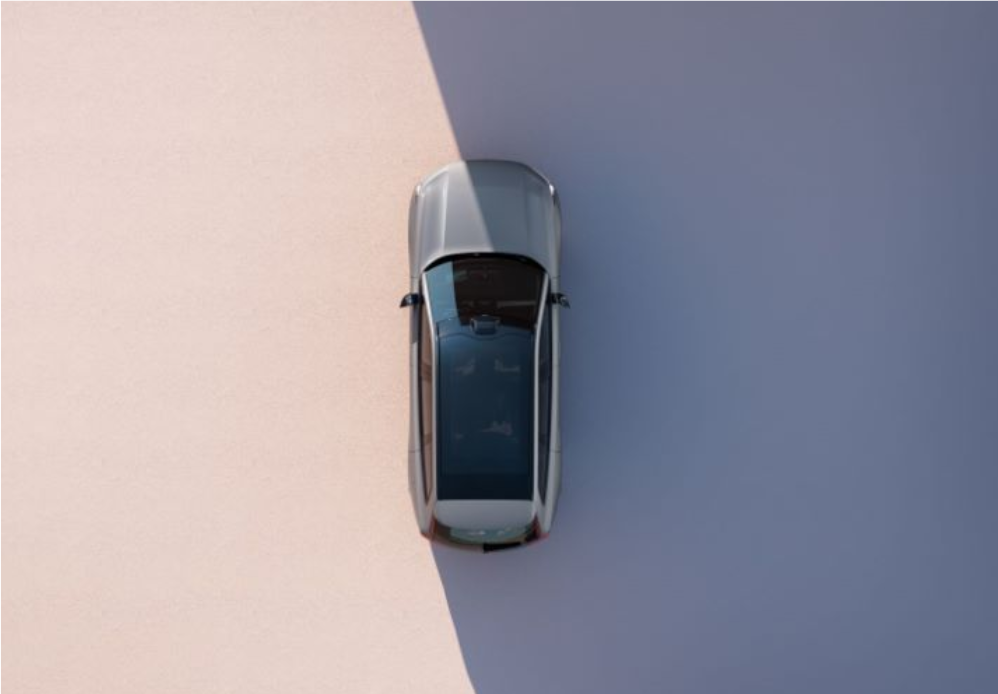
Simply put, the SOA software architecture is a more integrated architecture for various functions, just like “playing Lego”. It designs various functional interfaces of the vehicle to be more independent and flexible, which changes the situation where the car is moved as a whole by tweaking some functions.
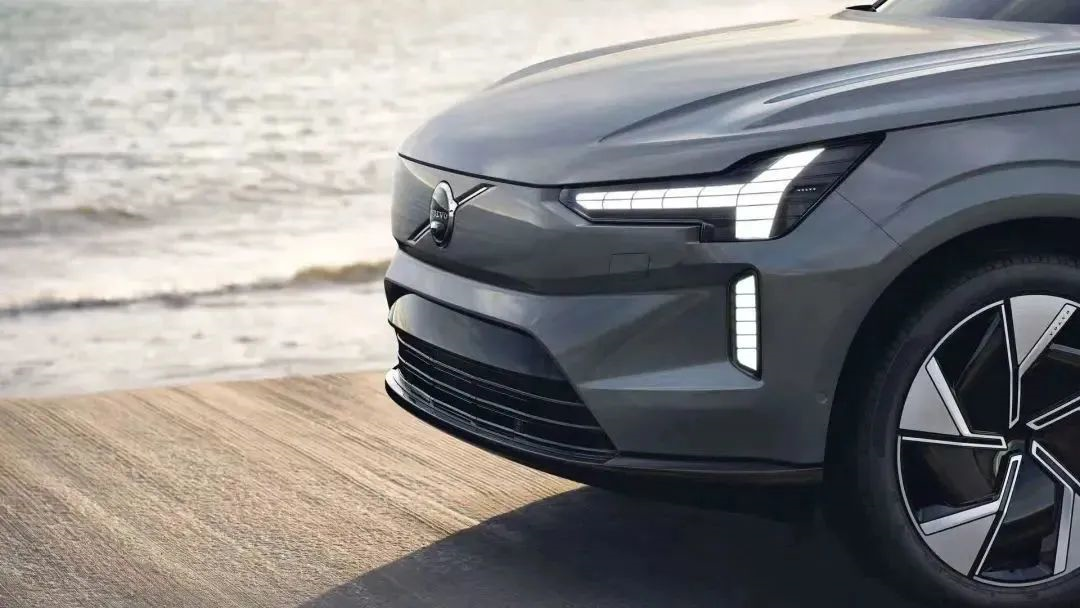
In addition, in the vehicle-wide SOA software architecture, various functional interfaces of the car will be more standardized. This allows the vehicle hardware capabilities to be opened up to other industries and connected to the Internet resources, so that we can enjoy a richer software ecosystem.
To give an example, the vehicle can access existing map resources such as Baidu Maps and develop the function of reminding you of the charging post address on the way without having to create its own map.English Markdown:
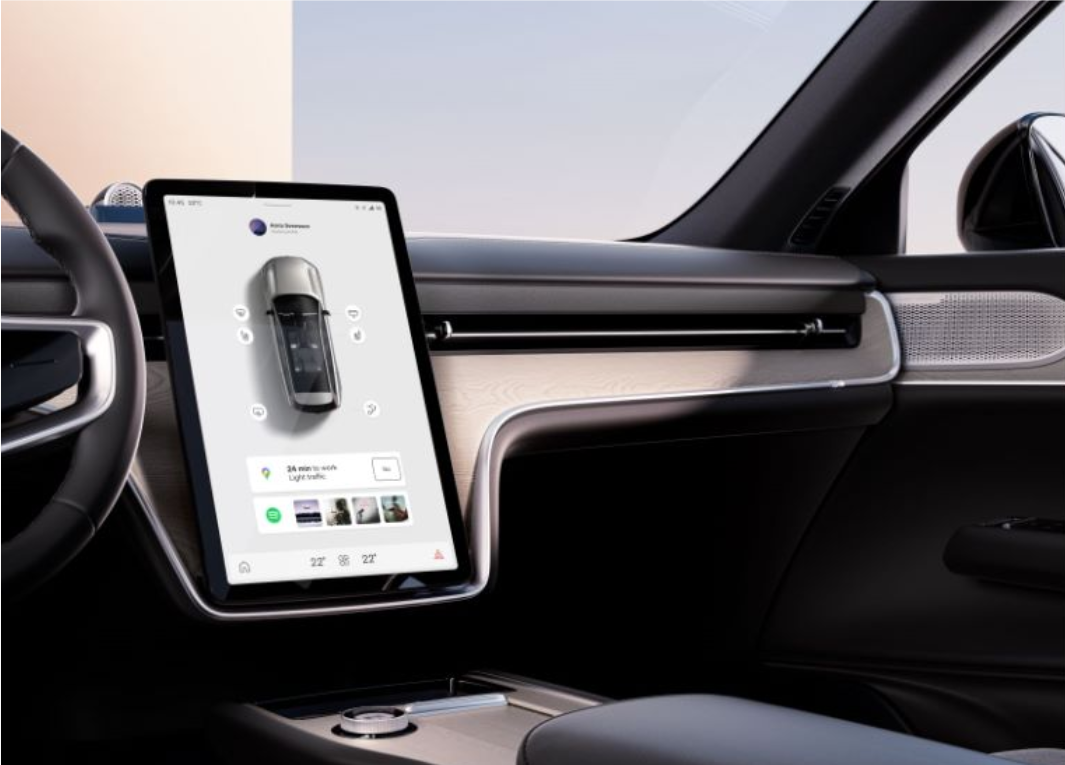
And with a unified standard, products based on the whole vehicle SOA architecture can directly enjoy the advantages accumulated and evolved from previous products.
Cabin System Consideration: How to Simplify
Apps on mobile phones are handy, but having too many downloads can also be overwhelming. This is the frustration brought on by information overload. For Volvo, while we want to add functionality, we also need to reduce usage costs.
To address this, Volvo EX90 customizes a scenario bar for car owners on the screen. Different situations, different interfaces: when the car owner gets in the car, a welcome message will be displayed on the screen. When the vehicle is in driving mode, the main screen information will be updated to include navigation, media, phone, and car control driving needs.
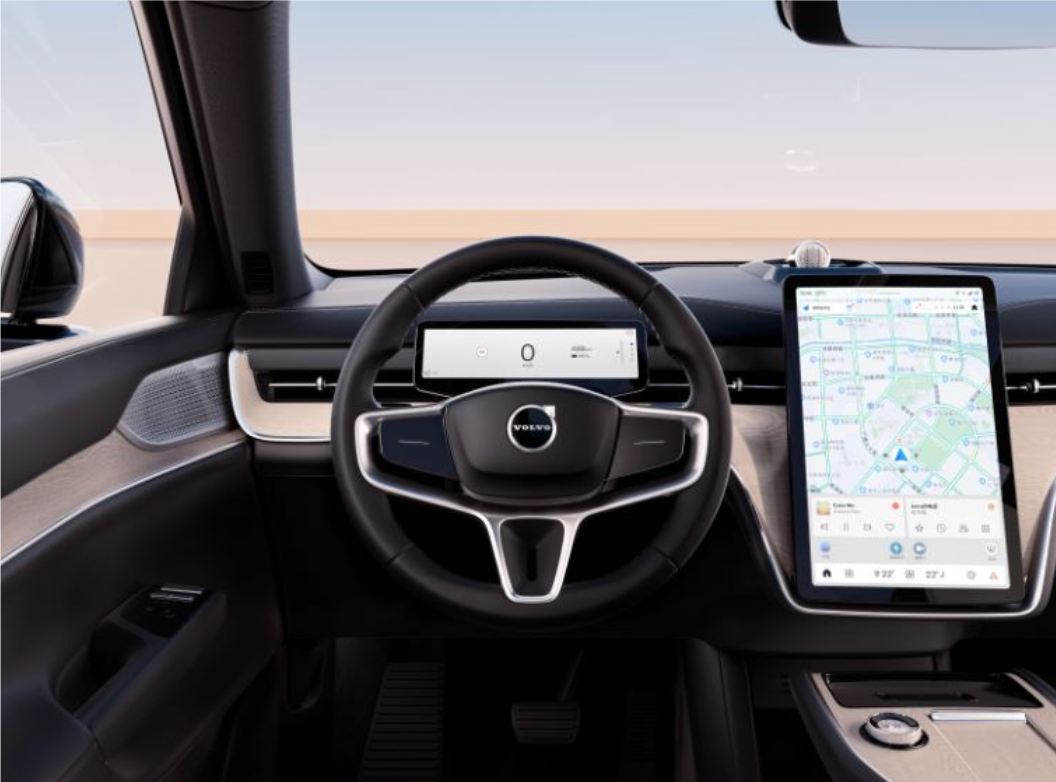
Volvo reserves space for a real-time scenario bar, which provides users with information based on the vehicle’s status. Whether you’re parked, driving, or calling inside the car, the system provides appropriate operations to avoid cluttered screen information.
High-Performance Driving with Lidar
The Volvo EX90 is Volvo’s first model equipped with Lidar. It is equipped with Luminar’s 1550nm Lidar, which can detect up to 250 meters at 10% reflectivity.

With this Lidar, the Volvo EX90 can detect stationary black tires 120 meters ahead or pedestrians 250 meters away.
Because Lidar does not rely on a light source, it can detect vehicles in a hundred meter range even in low visibility conditions such as dark nights or dim tunnels, to maintain safe distances.
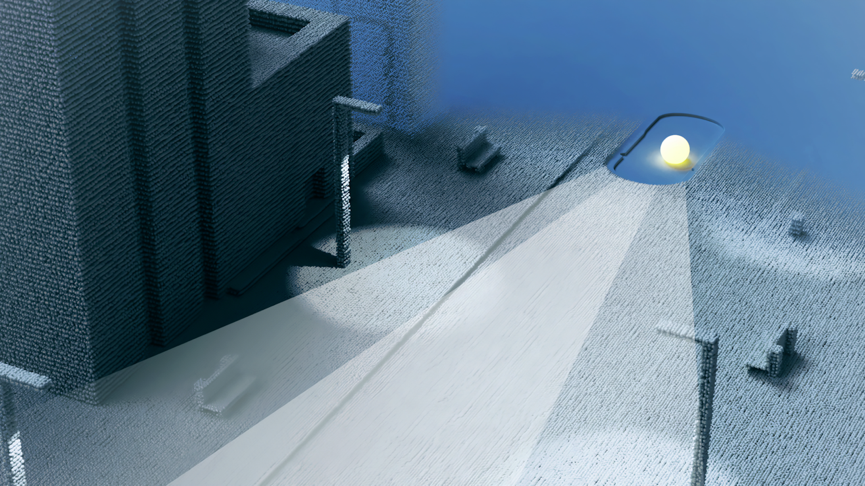 In addition, the Volvo XC90 is equipped with 5 body radars, 8 cameras, and 16 ultrasonic sensors that work in synergy with the laser radar system to perceive the surrounding environment.
In addition, the Volvo XC90 is equipped with 5 body radars, 8 cameras, and 16 ultrasonic sensors that work in synergy with the laser radar system to perceive the surrounding environment.
Having sensing hardware alone is not enough. The Volvo XC90 is also equipped with the NVIDIA DRIVE Orin chip, which has a computing power of up to 254 TOPS (trillions of operations per second).
This high computing power provides strong support for system decision-making and also provides space for OTA with redundant computing power.
Self-developed autonomous driving algorithm capability
Traditional car companies have been relatively late in researching intelligent driving, but this statement does not apply to Volvo. Volvo is one of the early car companies to develop autonomous driving, and in 2012, Volvo launched the first autonomous driving concept car in automotive history.
Volvo’s PilotAssist adaptive cruise control system was already in use in 2015 and is installed in models such as the S90, providing L2-level assisted driving functions.
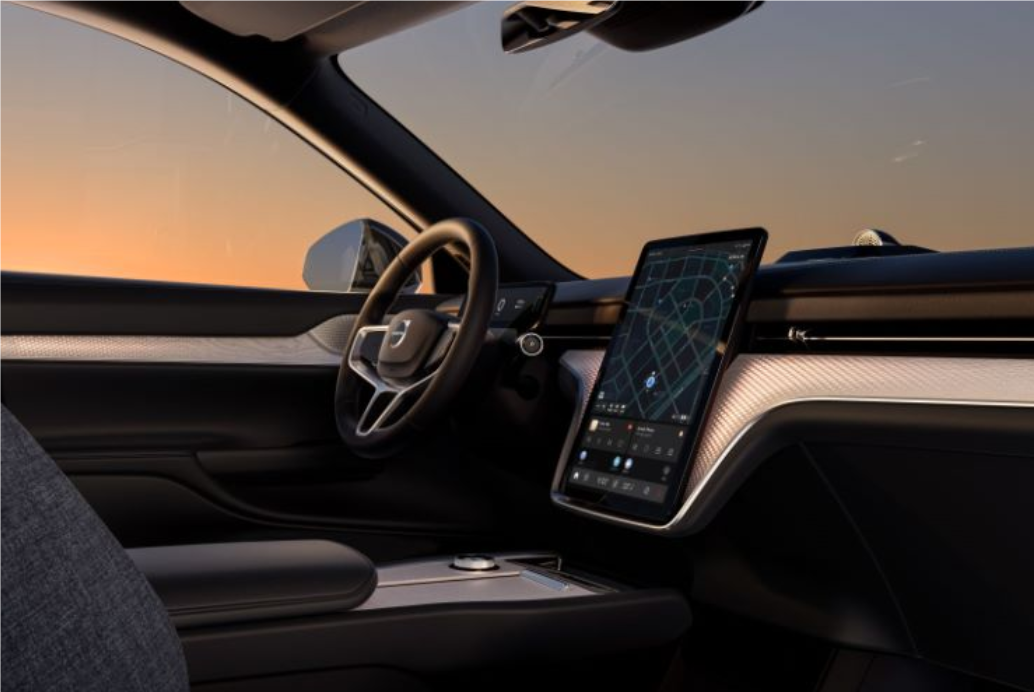
In the research and development process of Volvo’s ADAS capability, from sensor fusion and decision-making to execution, all aspects are self-developed. At the same time, Volvo’s subsidiary, Zenseact, is an autonomous driving software development company that can provide full-stack autonomous driving software.

Volvo’s adoption of laser radar technology is not actually ahead of its time, partly due to the previous architecture, as most of its products are hybrid models and not fully electric. On the other hand, it may also be due to Volvo’s steady and pragmatic approach to intelligent driving strategies.
Driver perception system capable of taking over vehicle control
Since the advent of intelligent driving technology, there has been an industry-wide problem that many manufacturers are not keen to emphasize the ability boundary of their own assisted driving functions.Volvo does not intentionally promote how much freedom is brought by the intelligent driving of the Volvo EX90, but emphasizes safety first. In order to make drivers more aware and attentive of safety, the cabin is equipped with a set of DUS driver perception system with dual in-car cameras.

This driver perception system is composed of one capacitive steering wheel and two cameras, which can monitor the driver’s state in real-time, including concentration, alcohol consumption, fatigue, and so on. Once one of these issues is detected, the system will emit a mild reminder and then gradually increase the intensity of the alert.

If the driver does not respond to the warning sound or if any special situations are detected, such as the driver falling asleep or having a sudden illness, the system will slow down the speed or even stop the vehicle, turn on the lights to warn pedestrians and call for help.
Safety, safety, and safety
Although Volvo’s vision is “zero collision,” Volvo EX90 still uses environmentally friendly and high-strength materials, using 15% steel, 25% aluminum, and 15% recyclable plastic throughout the vehicle to prevent accidents from happening.
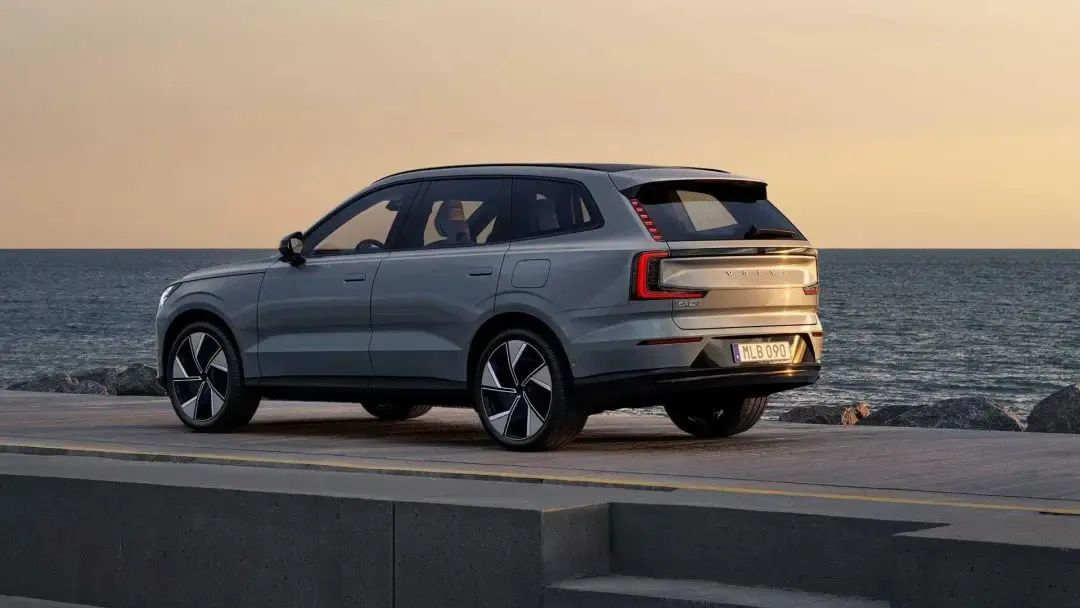
Volvo hopes that with the EX90, incidents where passengers are seriously injured or harmed in Volvo’s vehicles will disappear. The good reputation of safety and continuous breakthroughs in safety technology are Volvo’s unique trump cards. With nearly a decade of experience in intelligent driving algorithms, Volvo’s optimization this time will be a significant impact for emerging forces.
This article is a translation by ChatGPT of a Chinese report from 42HOW. If you have any questions about it, please email bd@42how.com.
